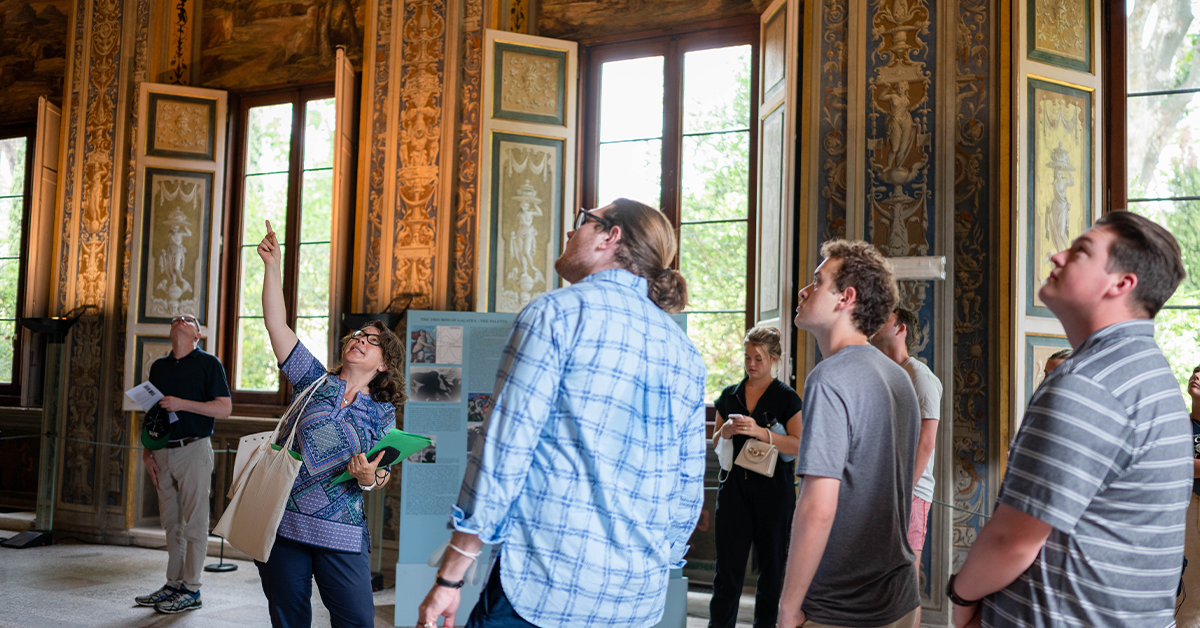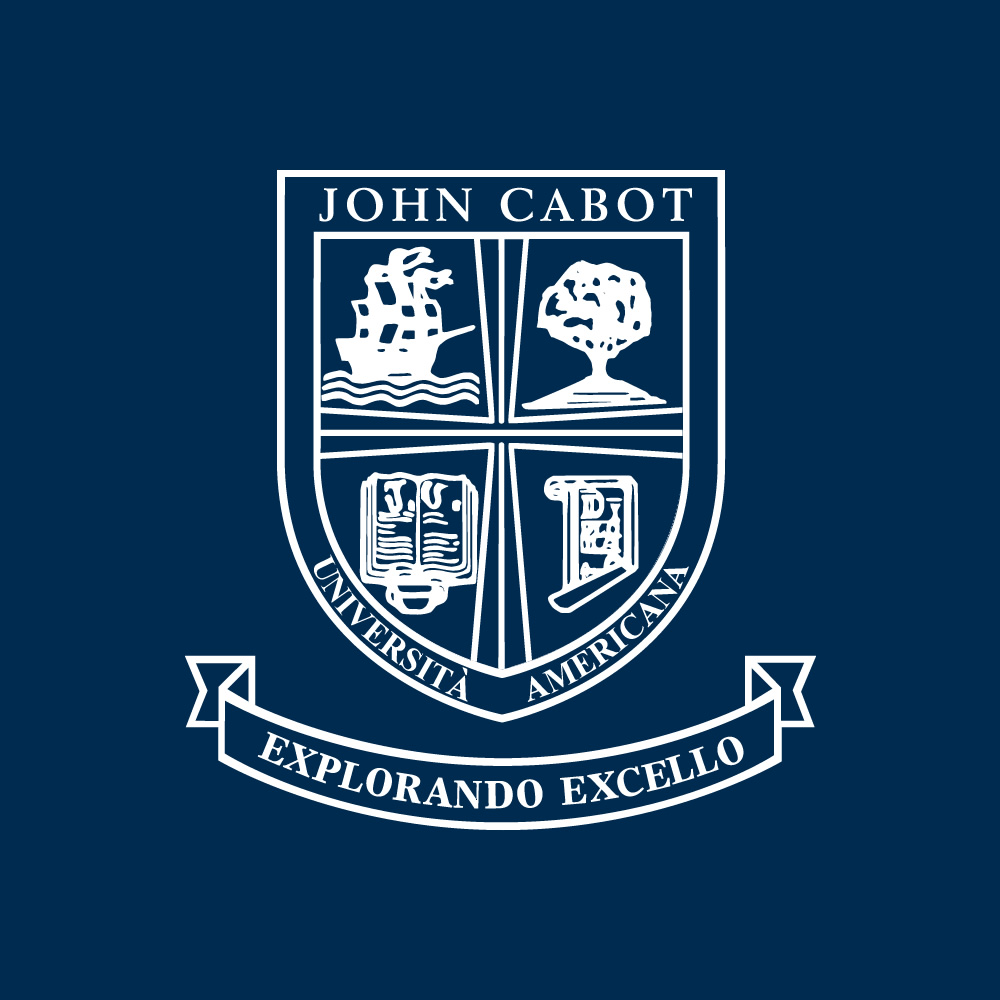

When you study art history in Italy as an Art History major at John Cabot University you have a unique chance to immerse yourself in a city with centuries of artistic legacy. In your final year, the Research Practicum becomes a key part of your academic journey.
This practicum enhances your understanding of art historical methods, sharpens your research skills, and is crucial to completing your senior thesis. Here are three tips to help you make the most of your research practicum while you study art history in Rome.
1. Embrace Rome’s Onsite Learning When You Study Art History in Italy
At JCU, your learning will extend into the city’s museums, churches, archaeological sites, and more. When completing your research practicum, make it a priority to schedule regular visits to key sites that are relevant to your topic.
For example, if your research focuses on Renaissance art, explore firsthand the intricate details of the Sistine Chapel frescoes or study the structural innovations of St. Peter’s Basilica. These visits will give you a richer understanding of your subject's visual and contextual elements.
The practicum's goal is to connect your theoretical knowledge with real-world observations, and there’s no better place to do that than in Rome. Make sure to keep thorough notes when you study art history in Italy to bring insights from your surroundings into your academic research.
 Take advantage of your surroundings as you complete your art history degree in Rome.
Take advantage of your surroundings as you complete your art history degree in Rome.
2. Collaborate With Your Faculty Advisor
Throughout your practicum, you’ll work closely with a faculty member who will guide you through the research process, help refine your topic, and provide feedback on your progress. This mentorship is an invaluable aspect of the practicum.
To make the most of this opportunity, set up regular meetings with your advisor and come prepared with specific questions and updates on your work. Faculty members at JCU are often engaged in their own research and frequently involve students in their projects, offering a unique chance to learn from their experiences.
Don’t hesitate to ask for recommendations on primary sources or guidance on approaching specific works of art, especially if your research involves lesser-known or highly specialized areas.
3. Take Advantage of Internship Opportunities
One of the most exciting aspects of earning your art history degree at JCU is the potential for internships at prestigious institutions such as the Museo Nazionale Romano, the Galleria Doria Pamphilj, and the Biblioteca Angelica.
These internships offer you hands-on experience in art history and allow you to connect with professionals in the field, gain access to exclusive resources, and further enhance your research.
If you haven’t already secured an internship, now is the time to explore your options. While your practicum focuses on academic research, internships provide practical insights into museum curation, archival management, and art conservation.
These experiences can enrich your research by giving you new perspectives and allowing you to work with primary materials you may not otherwise encounter.
 Completing an internship during your art history degree builds experience and connections.
Completing an internship during your art history degree builds experience and connections.
Making the Most of Your Practicum at JCU When You Study Art History in Italy
The Research Practicum is a defining moment for Art History students at JCU, combining a passion for art with rigorous research methods in the rich artistic environment of Rome. By embracing onsite learning, working with your faculty advisor, and seizing internship opportunities, you’ll complete your practicum successfully and lay the foundation for a rewarding art career.
One of our art history majors, Sophia Vukovich summed up our program perfectly in a recent discussion: “The exposure to Roman art combined with incredible resources, lecturers, and a strong sense of community within the Art History department leads to a truly complete experience.” Make the most of it with the tips we’ve explored together.
Are you ready to attend our university in Rome?
Contact John Cabot University to learn more!




